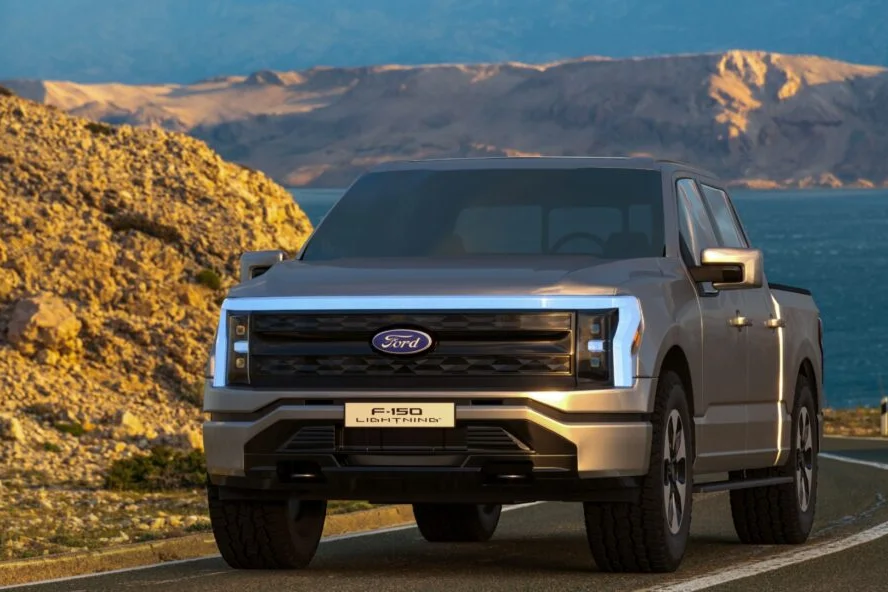Understanding Ford’s Fall in EV Sales In October
The world of electric vehicles (EVs) is rapidly evolving with demand skyrocketing and manufacturers like Ford investing heavily to stay ahead of the curve. However, with the recent release of the company’s sales data, there’s the clocked 8% drop in EV sales in October. This drop in sales is primarily attributed to reduced demand for F-150 Lightning, one of the stars in Ford’s EV lineup. Let’s take a deeper look into this interesting shift in customer behavior and why it matters.
Backdrop: Ford and The Electric Vehicle (EV) Market
The competition in the Electric Vehicle market is keeping world-class automobile manufacturers on their toes. From Tesla’s indomitable market presence to newer players like Rivian, everyone is going all hands in. Ford hasn’t been left behind in this race, thanks to its impressive lineup of electric vehicles, including the Mustang Mach-E and the Electric F-150 Lightning. This, coupled with bold moves such as considerable investments in EV production, signal Ford’s commitment to seizing market share.
The Slip in EV Sales: What Happened?
According to reports, Ford’s electric vehicle sales fell by over 8% in October. Interestingly, this coincided with declining demand for Electric F-150 Lightning, one of Ford’s most popular electric vehicle models. Despite the overall market growth in EVs, the dip in demand for F-150 Lightning has significantly impacted the figures.
F-150 Lightning: Why The Slowdown?
Demand Saturation or Market Shift?
It’s critical to understand why the flagship F-150 Lightning has experienced decreasing demand. One plausible explanation is the possible saturation of demand. The model received an enthusiastic response when Ford initially introduced it, leading to an initial buying spree that may be cooling down. Alternatively, we could be seeing a market shift – perhaps customers are anticipating the release of newer models or shifting their preferences to competitors’ offerings.
Supply Chain Constraints
Another factor that’s bolstering this downshift could be the supply chain challenges plaguing the automobile sector. The global shortage of semiconductors, shipping delays, and inflation are heavily impacting automobile manufacturers. These difficulties mean that even if customers are queuing up for F-150 Lightning, Ford might not be able to deliver at the rate it would like.
The Impact On Ford’s Overall EV Strategy
The slide in demand for F-150 Lightning and the resulting decrease in overall EV sales are undoubtedly unwelcome news for Ford. However, challenges such as these are not uncommon in the volatile EV market. Smart manufacturing companies recognize these hiccups and pivot their strategies accordingly, ensuring their relevancy and survival in the market.
Future Developments: What Can We Expect?
Ford’s commitment to the EV market is unquestionable. The company has recently announced plans to increase overall spending on electric and autonomous vehicles to $30 billion by 2025. This indicates that despite the recent dip in sales, Ford remains undeterred in its EV pursuit.
Furthermore, Ford is launching new EV models, such as the Mustang Mach-E and the E-Transit van, which have their unique appeal. The company is also investing in EV infrastructure, like the wide network of charging stations, to provide a seamless and enjoyable ownership experience for its customers.
Conclusion: Ford’s Prospects in the EV Marketplace
Yes, an 8% sales drop is a speed breaker. However, it’s unlikely to derail Ford’s larger EV strategy. With its sustained commitment to EV technology and future investments, Ford is ensuring it remains a strong contender in the EV race. It should be exciting to see how Ford rebounds from this dip and how it shapes its trajectory in the exciting and dynamic world of electric vehicles. Savvy market followers and potential customers should keep a keen eye on how this automotive giant uses this challenging phase as a stepping stone to future success in the renewable mobility space.

Leave a Reply